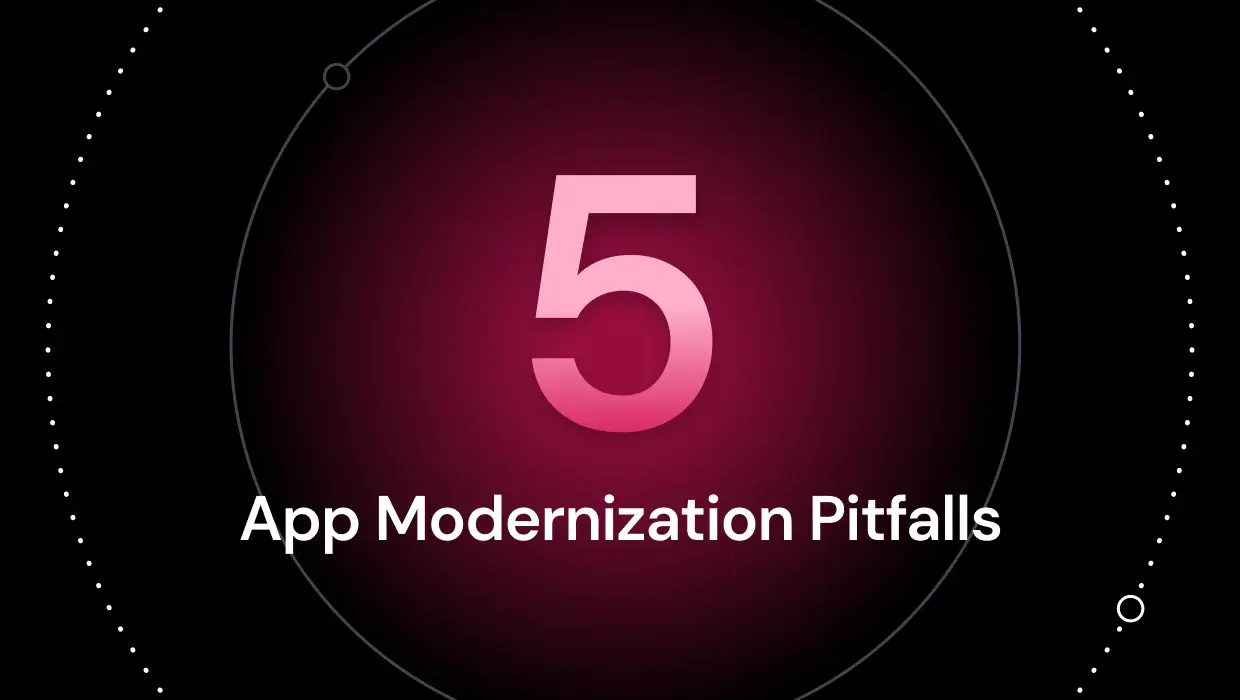As technology continues to evolve, businesses are increasingly turning to microservices and containerization to improve their IT operations. Container management is the process of overseeing and maintaining the containers that hold the microservices in a distributed system. It enables the efficient deployment, scaling, and management of microservices.
By understanding container management, you can better navigate the complexities of microservices and gain insight into the best practices and tools to deploy and maintain them efficiently. Defining what it is, why it’s used, and why a management strategy is needed will lead to more effective operations and better overall performance of your IT systems. Here’s what you need to know about container technology.
The Role of Virtual Machines in Container Technology
Container technology grew out of virtual machine partitioning in the 1960s. Virtual machines (VM) let multiple users access a computer’s full resources through a single application. VMs were used to install multiple operating systems and applications on a single server.
Unlike VMs, containers have shared resources. Many deployments used multiple microservices in a single container. That complexity hindered container usage until automated management tools were developed. Now, system architects have access to solutions that make containerization software more reliable. These tools make up what is known as container management.
In contrast to VMs, containers require fewer resources and are faster to initialize, but those capabilities often make deployment more complex. When virtual machines were first introduced, developers used them to install multiple operating systems and applications on a single physical server, each in their own isolated environment.
Instead of having multiple servers running different development environments, IT could maximize the use of physical servers through VMs. However, they were resource-heavy and slow to spin up.
Security was not a major concern when VMs first hit the market, so their deployment allowed unrestricted access to any environment running on the same device. In the 1980s, developers began looking at ways to restrict access to improve system security. Limiting file access to specific directories was the start of container-style processes.
The Growth of Container Technology
Docker released its container platform in 2013. It was a command-line, open-source solution that made container deployment easy to understand. It was well-received, and within a year, the software was downloaded over 100 million times.
In 2017, Google’s Kubernetes became the default container tool as it supplied scheduling and orchestration. When Microsoft enabled Windows Server to run Linux containers, Windows-based development could take advantage of the technologies. That change opened the door to more container-based deployment.
As more organizations moved to the cloud, container management became a concern as deployment and monitoring remained complex. Today, many cloud providers offer managed container services to deliver streamlined solutions with independent scalability. Ongoing development looks to incorporate AI technologies for improved metrics and data analysis, leading to error prediction, incident resolution, and automated alerts.
RELATED: Monoliths to Microservices: 4 Modernization Best Practices
According to Statistica, the container market is expected to reach $5 billion US dollars in 2023 with a year-on-year growth rate of 33%. Whether considering or expanding the use of container technologies, organizations should develop a strategy for how to incorporate container management into their modernization plans.
To understand the role this technology plays in a company’s efforts to reduce its technical debt, IT staff should evaluate the landscape, beginning with what container management entails.
What is Container Management?
Containers are virtual operating systems that allow applications, their libraries, and dependencies to operate in one deployable unit. Often used in conjunction with microservices, containers enable multiple applications using the same operating system kernels to function as self-contained code. Containerization makes for lighter-weight implementations with greater interoperability than VMs.
However, containers have to be managed. They have to be deployed, scaled, upgraded, and restored. As more companies look to cloud-native containers, managing hundreds or thousands of them becomes overwhelming. That’s why the market for container management continues to grow.
Gartner defines container management as:
A set of “tools that automate provisioning, starting/stopping and maintaining of runtime images for containers and dependent resources via centralized governance and security policies.”
Container management solutions may be platforms that operate as software-as-a-service or software solutions installed locally. Container management enables developers and administrators to realize the benefits of containerized microservices while minimizing potential errors.
Why Use Container Management?
Container management tools simplify the deployment and monitoring of containers. With these tools, IT can stop, start, restart, and update clusters of containers. Automated tools can orchestrate, log, and monitor containers. They can perform load balancing and testing.
IT departments can set policies and governance of a containerized ecosystem. As more organizations move to a container infrastructure, they will need automated tools to manage large environments that are too much for staff to maintain.
Other benefits of container management tools are:
- Portable. Containerized applications can be moved from the cloud to on-premise locations. They can move to third-party locations without integration concerns, as the technology does not depend on the underlying infrastructure.
- Scalable: Microservices can scale independently with minimal impact on the entire application.
- Resilient: Different containers can hold applications so that a disruption in one container does not result in a cascading failure.
- Secure: Unlike VMs, containers isolate applications. Gaining access to an application in a container does not automatically give bad actors access to others.
Containers are lightweight with minimal overhead, making for fast deployment and operation. However, turning monolithic legacy code into containerized microservices can introduce vulnerabilities unless carefully orchestrated. Container management is not without its challenges.
What Are Container Management Challenges?
Management complexity and the lack of a skilled workforce are the primary obstacles to containers and their management. For example, containers only exist when needed. When a container is no longer required, it spins down, taking all of its data with it. Maintaining persistent data across containers poses significant problems if not well managed.
Complex Container Management
What happens when a container needs data that is no longer available? How can developers ensure data is persisted? How can they identify these errors with hundreds of clusters of containers to manage? Without container management, it’s almost impossible for developers and architects to deliver an error-free implementation.
Application isolation protects against VM-type vulnerabilities; however, orchestrators can expose containers to attack. APIs, monitoring tools, and inter-container traffic increase the attack surface for hackers. Using security best practices, such as only using trusted image sources, reduces authentication and authorization weaknesses. Closing connections minimizes the number of entry points for bad actors.
Lack of Skilled Staff
The most significant challenge is the lack of experienced staff. Organizations need a thorough understanding of the scale and scope of a containerization effort. They need a roadmap that outlines how existing code connects and communicates to ensure relationships are retained. Since containers can run in multiple environments, architects must define the business objectives behind the move to modernization to ensure the right infrastructure is in place.
A recent Gartner survey found that Kubernetes and infrastructure-as-code were the most sought-after skills. Some organizations are developing expertise centers. These groups are tasked with helping in-house staff as needed while using the opportunity to train others to reduce the skills gap. Others are looking for outside sources to help with knowledge transfer.
With the drive to modernization using microservices and containers, companies need a container management strategy to address the critical challenges that a complex container architecture can present. Without a reasoned strategy, organizations face a technical debt greater than that of legacy code.
Why is a Container Management Strategy Needed?
Container management should be part of any modernization strategy. However, its complexity requires a roadmap that includes the following:
- Isolation of users and applications
- Authentication and authorization protocols
- Resource management
- Logging and monitoring
- Long-term container usage
- Multi-cloud platforms
- Microservice development
The plan should include methods to address edge computing, cloud implementations, modernization, and training.
Implementing Edge Computing
With edge computing, the volume of data makes management difficult. Moving all the data to a central location poses performance concerns since much of the data is being captured at the edge. More organizations are looking at building edge infrastructures to prepare the data before sending it to the cloud for processing.
Containerizing applications at the edge to allow data ingesting and cleaning should be part of any strategy. Containers can improve AI implementations or data-intensive processing and reduce cloud storage costs by placing them close to the data acquisition point.
Refactoring Cloud Implementations
Within the last three years, many organizations have moved all or some of their infrastructure to the cloud. Unfortunately, for many, the move was rushed. Monolithic applications that were migrated (lifted and shifted) to the cloud or simply containerized as a full monolith were brittle and could not scale or be updated without refactoring or rewriting. Making architectural changes would require careful planning by developers and business units to minimize disruption without compromising modernization.
RELATED: Four Advantages of Refactoring that Java Architects Love
Companies cannot assume that simply migrating an application to the cloud removed any technical debt at all. By refactoring cloud implementations, IT departments can ensure that their cloud deployments reduce technical debt.
Modernizing Monolithic Applications
Breaking monolithic software into microservices and containers requires a roadmap that helps developers navigate a way forward. A migration strategy also highlights skills gaps that can be addressed before modernization is underway. As container management tools improve and more organizations move to a cloud-native environment, a clear strategy is needed to ensure that the migration does not increase technical debt.
Few modernization efforts can be completed at once. The so-called big bang approach increases delivery times and introduces many of the same issues that monolithic structures present. Iterative approaches make managing thousands of lines of code more manageable and reduces the risk of operational disruption.
The vFunction Modernization Platform and Container Management
vFunction’s refactoring platform for Java and .NET applications can help organizations realize the benefits of container management. Using its platform, organizations can decompose monolithic apps into microservices for container deployment in cloud-native environments. The platform can serve as a tool for developing well-constructed microservices that minimize the risks to container implementations.
As companies plan for 2023, they will look to containers and their management as a modernization path. Without a complementary modernization strategy, the resulting infrastructure can prove problematic. For help modernizing Java and .NET applications that take advantage of the cloud environment, contact us to see how we can work with you to develop a strong implementation strategy.





